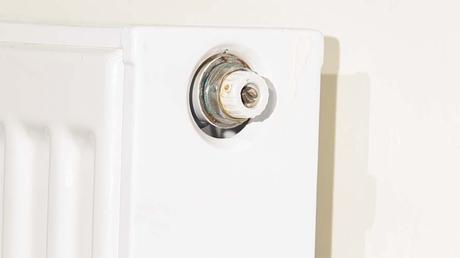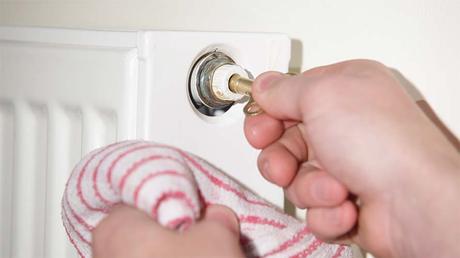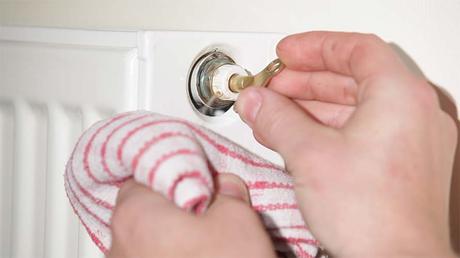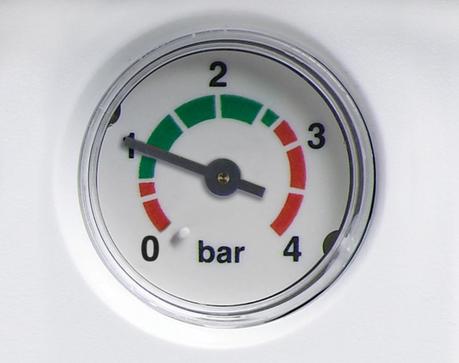In this easy Advice Centre guide, we’ll show you how to remove air from your heating system to help you keep home nice and cosy all year round.
What Does Bleeding A Radiator Mean?
Bleeding a radiator means releasing air that is trapped in your heating system.
Letting this air out will help you to heat your home more effectively and reduce your energy bills.
If you can hear pipes banging or radiators gurgling, this is usually a sign that you should bleed your radiator.
Venting your heating system is easy to do, just follow the steps below to fix the problem, save money and create a warm and cosy home that you can put your feet up in.

How To Bleed A Radiator In 12 Easy Steps
Follow our simple 12 step guide for how to bleed a radiator and your radiators should be piping hot and noise-free in no time.
You will need –
- A radiator bleed key
- A cloth to catch any water leakage
- A container or towel to place under the radiator
A Step-By-Step Guide For Bleeding A Radiator
Time needed: 20 minutes.
Please Note – This time is approximate and it will probably take longer if you are bleeding more than one radiator.
A step-by-step guide for bleeding hot water radiators
- Turn The Heating On Full
Wait until your radiators have reached their maximum heat.
This will help you to feel any cold spots and identify which radiators need bleeding. - Check Each Radiator For Cold Spots
Carefully run your hand along the top of each radiator. If you feel any cold areas, that is a sign that the radiator needs bleeding.
Make a note of which radiators need bleeding as you go through the house. - Turn The Heating Off And Allow It To Cool Down
It is important to turn the heating off and allow the radiators time to cool.
This is to make sure that the hot water in the radiators doesn’t burn you when you start to bleed the radiators. - Find The First Radiator To Bleed
If you find that you need to bleed more than one radiator, always start with the one on the ground floor that is furthest away from the boiler.
- Locate The Radiator Bleed Valve
You will usually be able to find the bleed valve at the top and side of your radiator.

The bleed valve is the small metal square or screw found inside the surrounding nut. - Place A Tray Or A Towel On The Floor
Put your container or towel on the floor beneath the bleed valve.
This is to catch any drips and protect your flooring from any discoloured water. - Insert The Radiator Bleed Key
Take your radiator bleed key and insert it into the bleed valve until they have locked together.

Hold your cloth next to the valve and under the little drain hole and be ready to catch any drips. - Make A Quarter (Anti-clockwise) Turn
Slowly turn the key anti-clockwise to open the valve.
This will allow the air to escape and you should start to hear a hissing sound.
Keep turning the valve until it is a quarter to a half of the way open.
Make sure to not open the valve to fully to avoid water escaping too quickly. - Close The Radiator Bleed Valve
Once the hissing noise and air stop – and water starts to leak out – you will have bled all the trapped air from the radiator.

Turn the key clockwise to close the valve.
Make sure not to close the valve too tightly to avoid damaging the valve. - Bleed Your Other Radiators
Repeat this process for any other radiators in your home that need bleeding.
If your home has two floors, continue on the ground floor and then move upstairs to bleed those radiators last. - Check The Pressure Of Your Boiler
If you have a pressurised central heating system you may notice that the pressure gauge on your boiler has dropped since bleeding your radiators.

If that’s the case, you will need to top the boiler pressure back up before turning the heating back on. - Turn Your Heating Back On For Your Final Checks
Once your boiler pressure is back to normal, you can switch your heating back on.
Give your radiators some time to heat up and check to see if there are any cold spots.
If you find that there are still some cold patches at the top of the radiator, try bleeding the radiator again.
Does Your Radiator Still Have Cold Spots?
A radiator that requires bleeding will have cold patches at the TOP, so if you bleed your radiator and find that there are cold patches at the bottom, it could mean you have a problem with sludge or sediment blocking the water in the radiator.
Take a look at our guide to help you remove sludge and limescale from your heating system and fix your cold radiators.

How To Bleed A Radiator – Frequently Asked Questions
Do You Bleed Your Radiators With The Heating On Or Off?You should always bleed your radiators when the heating is switched off and the system has cooled down.
Bleeding radiators with hot water flowing through the system increases the risk of scalds and burns.
If your home has more than two floors, begin by bleeding the downstairs radiators first – start with the one that is furthest away from your boiler.
How Often Should You Bleed Your Radiators?Hot water radiators should be bled at least once a year.
It is always best to do this well in advance of the winter months so your system can be ready and be in full working order before the temperature begins to drop.
The average radiator should take no more than 20 to 30 seconds to bleed in full. This can vary with the size of the radiator and the amount of air trapped inside.
Simply carry on bleeding the radiator until the hissing noise has stopped and water begins to run out of the bleed valve. This means that you have bled all of the air out of the radiator.
Radiator keys are easy to get your hands on.
Most hardware stores will stock them, and prices range from anywhere between 50p to a fiver.
The Very Best Heating Advice From BestHeating.com
If you’re having trouble with your heating, want to move a radiator or decorate behind it, or perhaps fix a leak, make a change or improve your interior design, we have a guide to help you do just about anything radiator related.
Don’t let your heating get you down, discover a wealth of expert heating advice with BestHeating.com.


